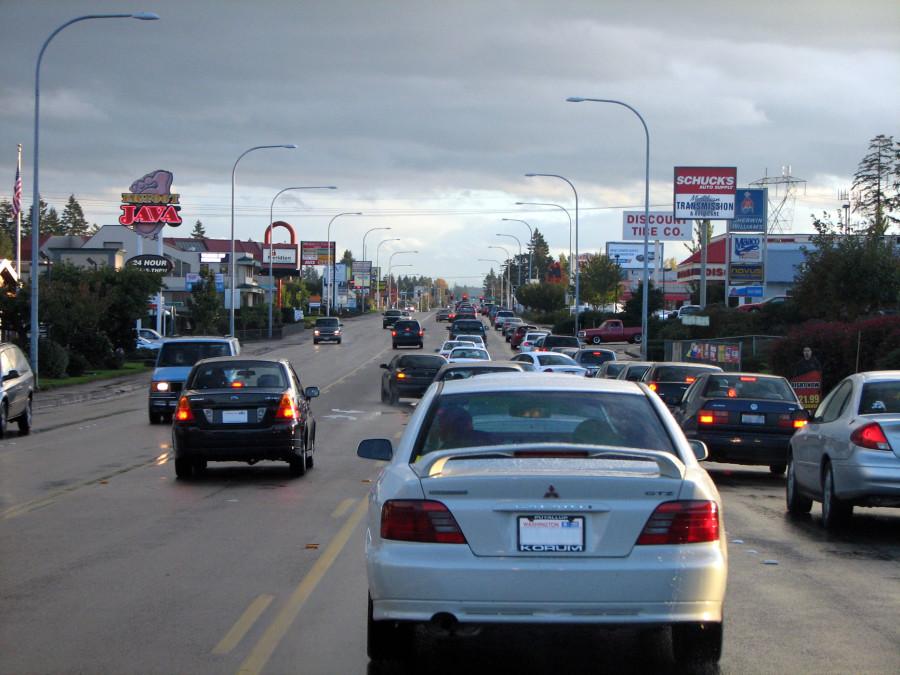By Neela Banerjee
WASHINGTON — The Environmental Protection Agency issued final rules Monday to slash the amount of sulfur in gasoline, which would help cut smog-causing pollution from autos and bring the rest of the country’s fuel supply in line with California’s standards.
The new rule for “Tier 3” gasoline calls for reducing the amount of sulfur in fuel by two-thirds, to 10 parts per million from 30 parts per million. Similar low-sulfur gasoline is already in use in California, Europe, Japan and South Korea.
The new gasoline would be available at the pump by January 2017.
Cutting sulfur improves the efficiency of catalytic converters in automobiles, which helps remove other pollutants that dirty the air and damage public health. The EPA said once the new rule was fully in place, it could “help avoid up to 2,000 premature deaths per year and 50,000 cases of respiratory ailments in children.”
“These standards are a win for public health, a win for our environment and a win for our pocketbooks,” said EPA Administrator Gina McCarthy.
Environmentalists, regulators and public health advocates welcomed the new regulation.
“This rule is a huge deal,” said S. William Becker, executive director of the National Association of Clean Air Agencies, a group of state regulators. The organization estimated the rule would have the effect of removing 33 million cars from the road.
“Every metropolitan area in the country will benefit from it,” Becker said. “We know of no other air pollution control strategy that provides as substantial, cost-effective and immediate emission reductions as Tier 3.”
The auto industry is among the rule’s biggest supporters because the new sulfur standards allow for a consistent national approach, instead of one in which a separate sulfur standard exists in California.
The new fuel standards also would provide gasoline that would make auto companies’ technology perform better.
“Since the vehicle emission system and the fuel used act together in determining the emissions performance of the vehicle, automakers need cleaner fuels to achieve the lowest possible emissions,” said Michael Robinson, vice president of sustainability at General Motors Co.
The EPA said the new lower-sulfur fuel would add less than a penny to the price of a gallon of gasoline. The oil industry, however, disputed the EPA’s estimate, calling it oversimplified.
The American Petroleum Institute, the industry’s primary lobbyist, contends that the new sulfur standard would add 6 to 9 cents to every gallon of gasoline. The industry estimated that refiners would have to spend a total of $10 billion on new equipment.
“Any reform that increases the cost of manufacturing a product would put pressure on the price of that product,” said Bob Greco, director of refining and marketing for the American Petroleum Institute. “The costs being borne by industry are making it less competitive and affecting the consumer.”
Greco also said that mandating the production of the new low-sulfur fuel by 2017 was too fast and that the EPA usually gave the industry four to five years to comply with new rules. He said that his organization was reviewing the lengthy regulation and considering next steps, including the possibility of litigation.
McCarthy countered that the American Petroleum Institute’s estimate was based on outdated studies. Further, smaller refineries would have until 2025 to comply with the new standards.
Eleven years ago, California implemented a series of measures to reduce the sulfur content in gasoline from 80 parts per million to about nine now, said Stanley Young, a spokesman for the California Air Resources Board.
The state estimated that the standard added six-tenths of a cent to the price of a gallon of gasoline, closer to the EPA’s estimate.
“It was in a large package of rules to tighten emissions for vehicles, and it was probably the least controversial part of the whole thing,” said Daniel Sperling, a member of the board and professor of transportation engineering at the University of California, Davis.
“The cost to the oil industry is tiny when you spread it out over the production process,” he said. “And the cost for consumers for a gallon of gas, compared to the volatility of oil prices, is not even noticeable.”
———
©2014 Tribune Co.
Visit Tribune Co. at www.latimes.com
Distributed by MCT Information Services



